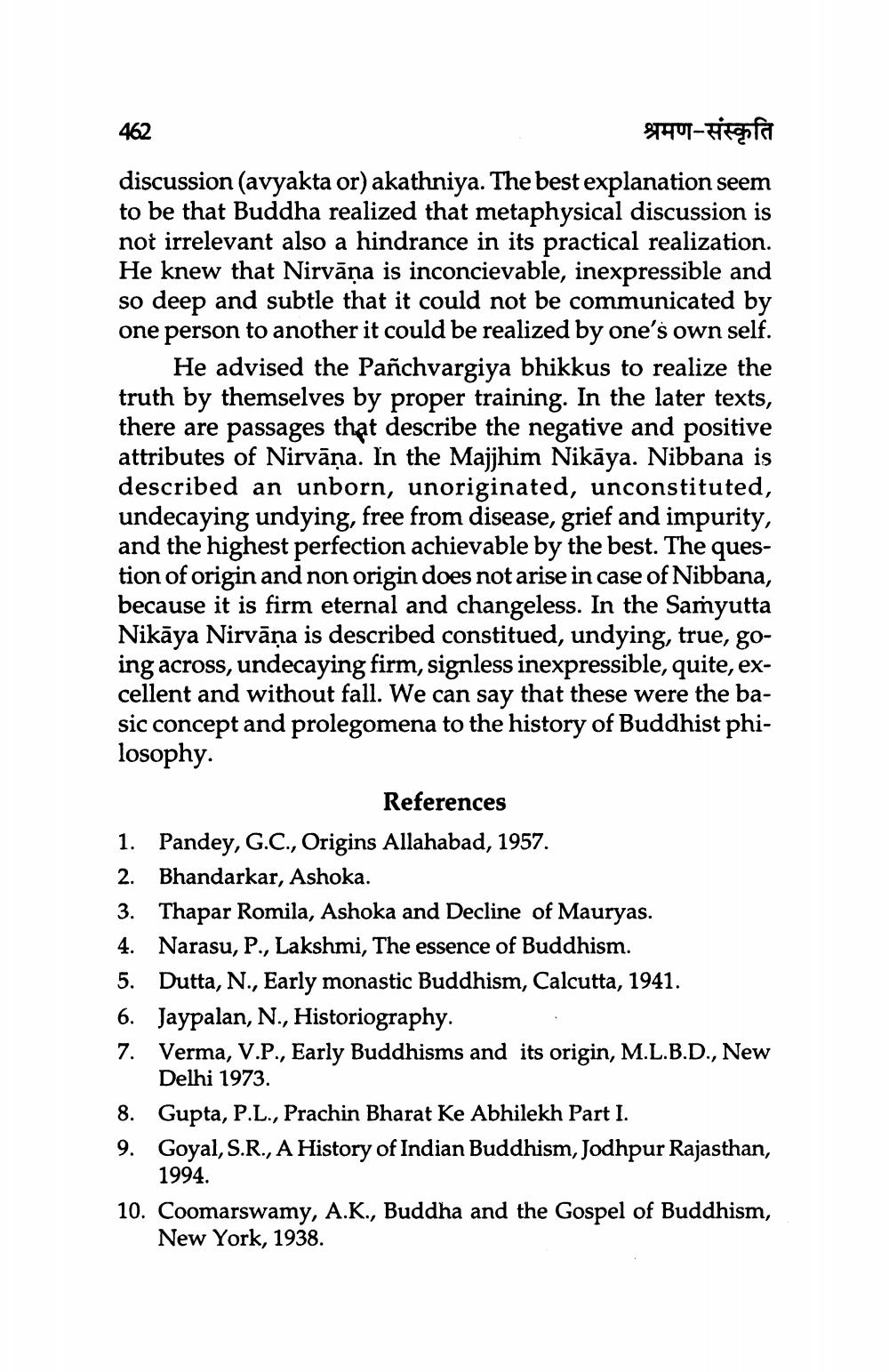________________
462
श्रमण-संस्कृति
discussion (avyakta or) akathniya. The best explanation seem to be that Buddha realized that metaphysical discussion is not irrelevant also a hindrance in its practical realization. He knew that Nirvāṇa is inconcievable, inexpressible and so deep and subtle that it could not be communicated by one person to another it could be realized by one's own self.
He advised the Pañchvargiya bhikkus to realize the truth by themselves by proper training. In the later texts, there are passages that describe the negative and positive attributes of Nirvāņa. In the Majjhim Nikāya. Nibbana is described an unborn, unoriginated, unconstituted, undecaying undying, free from disease, grief and impurity, and the highest perfection achievable by the best. The question of origin and non origin does not arise in case of Nibbana, because it is firm eternal and changeless. In the Samyutta Nikāya Nirvāṇa is described constitued, undying, true, going across, undecaying firm, signless inexpressible, quite, excellent and without fall. We can say that these were the basic concept and prolegomena to the history of Buddhist philosophy.
References 1. Pandey, G.C., Origins Allahabad, 1957. 2. Bhandarkar, Ashoka. 3. Thapar Romila, Ashoka and Decline of Mauryas. 4. Narasu, P., Lakshmi, The essence of Buddhism. 5. Dutta, N., Early monastic Buddhism, Calcutta, 1941. 6. Jaypalan, N., Historiography. 7. Verma, V.P., Early Buddhisms and its origin, M.L.B.D., New
Delhi 1973. 8. Gupta, P.L., Prachin Bharat Ke Abhilekh Part I. 9. Goyal, S.R., A History of Indian Buddhism, Jodhpur Rajasthan,
1994. 10. Coomarswamy, A.K., Buddha and the Gospel of Buddhism,
New York, 1938.




